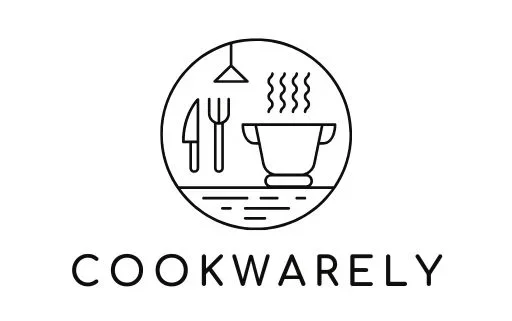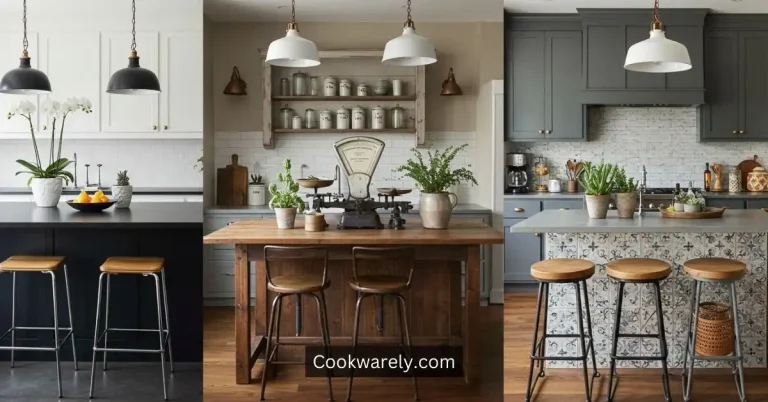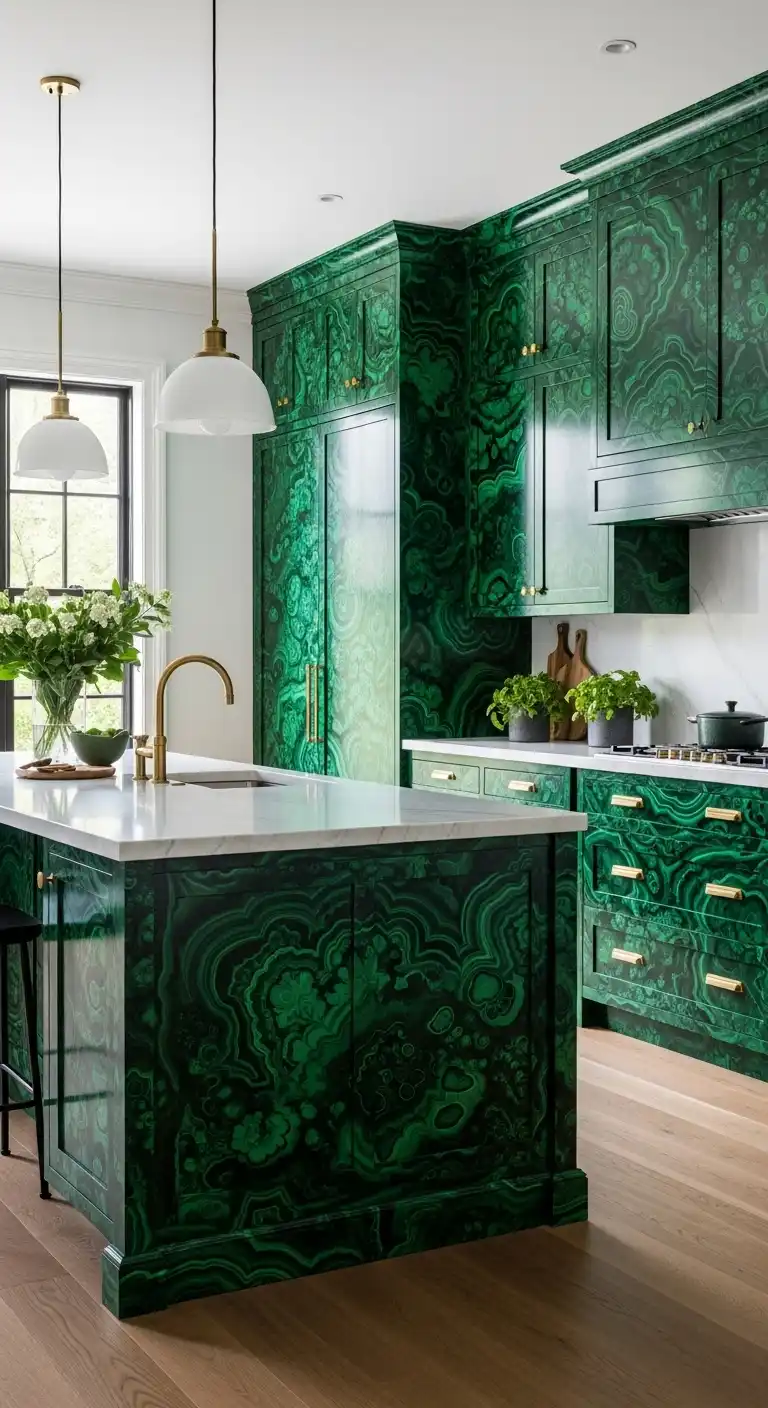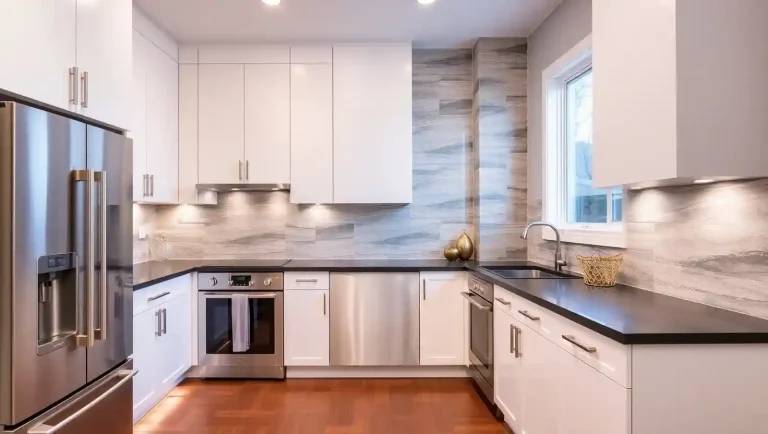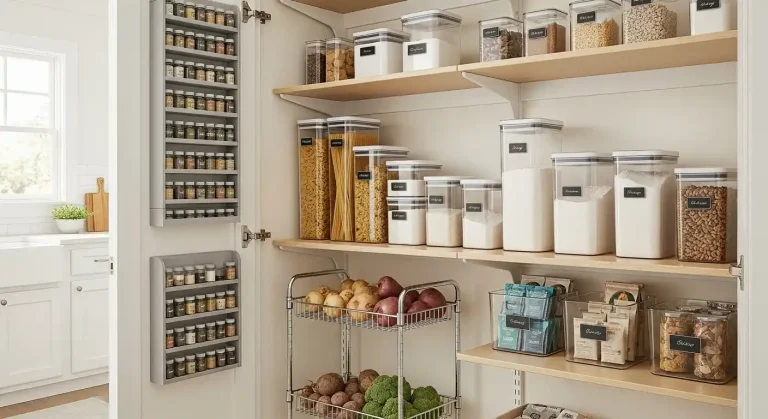Are Ceiling-Height Kitchen Cabinets Worth It: Here’s the Answer
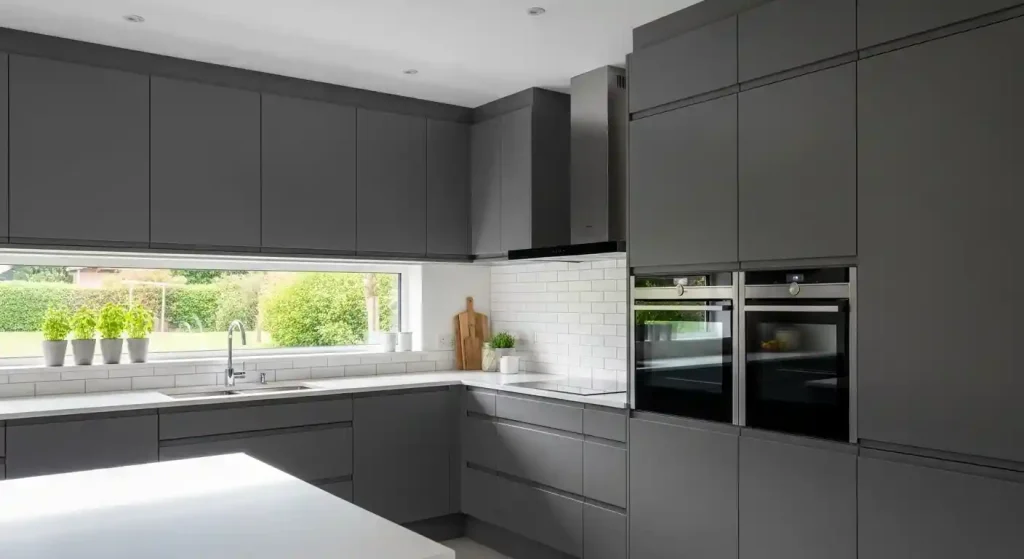
Every homeowner eventually faces one big kitchen design question: should you extend kitchen cabinets to the ceiling or leave space above them.
At first, the decision might seem purely aesthetic, but it impacts storage, cleaning, and even how large your kitchen feels.
Tall cabinets promise a sleek modern look, but they also come with installation challenges, added costs, and practicality concerns.
This guide explores the advantages, disadvantages, and clever alternatives so you can confidently decide what works best for your kitchen.
Along the way, we will touch on related ideas like cabinet storage solutions, kitchen cabinet color trends, and vertical space maximization.
If you are also curious about how to style the gap between cabinets and ceilings, check out Above Kitchen Cabinet Decor Ideas.
Understanding the Design Choice
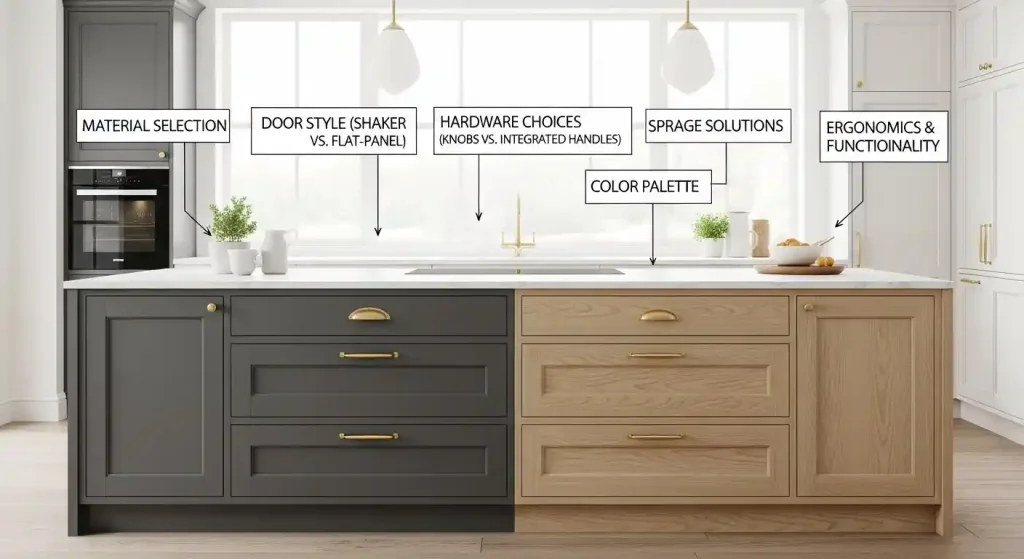
Why Homeowners Ask: Should You Extend Kitchen Cabinets to the Ceiling?
Many homeowners dislike wasted space and want their kitchens to look as polished as possible.
The unused area above cabinets often collects dust and feels unfinished, leading people to wonder if extending cabinetry solves the problem.
For small kitchens, extra storage at the top can be a lifesaver, while in larger kitchens the look creates visual drama and modern elegance.
This debate is not only about appearance but also about convenience and functionality.
You can also explore clever alternatives in our guide on How to Use Space Between Kitchen Cabinets and Ceiling.
Common Kitchen Cabinet Heights Explained
Most standard kitchen cabinets stop short of the ceiling, leaving anywhere from 12 to 24 inches of unused space.
Designers often add crown molding or decorative trim to bridge the gap, creating a more finished appearance.
Floor-to-ceiling cabinets eliminate this empty space, offering a completely seamless look.
Choosing between the two depends on ceiling height, overall kitchen style, and whether functionality or budget takes priority.
Pros of Extending Cabinets to the Ceiling
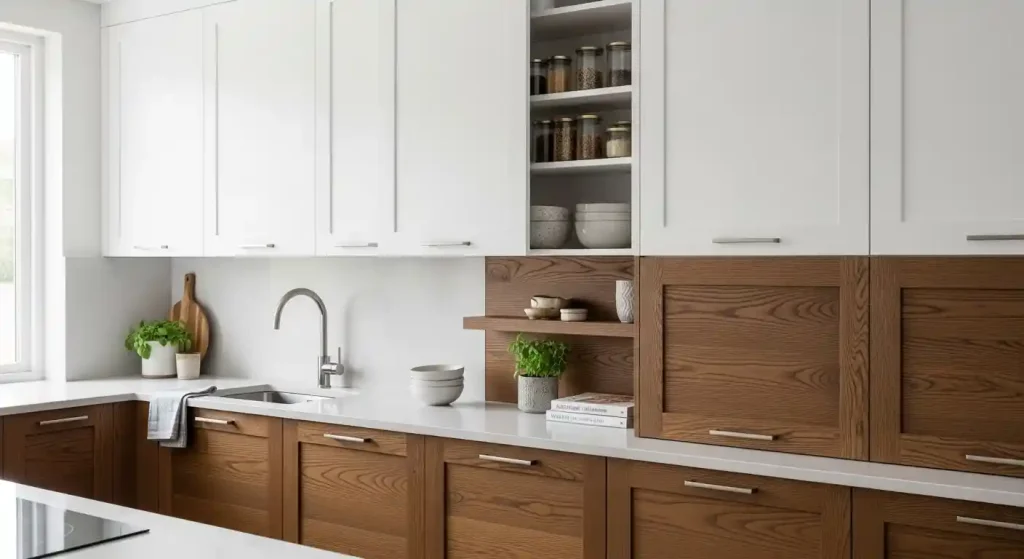
Maximizing Storage in Small Kitchens
In compact kitchens, every inch matters, which makes upper cabinets extremely valuable.
Tall cabinets allow homeowners to stash less frequently used items such as holiday serveware, large pots, or extra pantry goods.
By extending cabinets to the ceiling, you effectively double your vertical storage without expanding the kitchen footprint.
This approach benefits small apartments and galley kitchens where storage solutions are limited.
For more clever space-saving ideas, see How to Organize Kitchen Cabinets in a Small Kitchen.
A Cleaner, Sleeker Look Without Dust Traps
Open space above cabinets often collects dust, grease, and clutter, which makes cleaning difficult.
Extending cabinetry removes the gap entirely, resulting in a neat and streamlined look.
This design especially complements modern or minimalist kitchens where simplicity and clean lines are key design goals.
Not only does it reduce maintenance, but it also gives the entire kitchen a polished, high-end finish.
Making the Kitchen Feel Taller and More Spacious
Floor-to-ceiling cabinets naturally draw the eye upward, which creates the illusion of higher ceilings.
This vertical effect makes small kitchens appear taller and large kitchens feel even more grand.
When paired with light-colored finishes like White Kitchen Cabinets, the effect is amplified, giving the room an airy atmosphere.
Designers often use this trick in open-concept homes to connect kitchen style with surrounding spaces seamlessly.
Increased Resale Value for Modern Buyers
Many modern buyers expect kitchens to feel fresh, stylish, and practical.
Tall cabinets not only enhance storage but also signal that the space was thoughtfully designed.
This can be a selling point when competing with homes featuring older, more traditional cabinetry layouts.
Extending cabinets may cost more initially, but the return on investment can show in higher resale value.
Hiding Ductwork or Pipes with Custom Cabinetry
Kitchens sometimes have awkward bulkheads, ductwork, or uneven ceiling lines that disrupt design flow.
Extending cabinetry can disguise these imperfections, blending them into a seamless wall of storage.
Custom cabinetmakers can design upper sections that conceal mechanical elements while still providing usable space.
This trick keeps the kitchen looking cohesive, even in older homes with structural quirks.
Cons of Extending Cabinets to the Ceiling
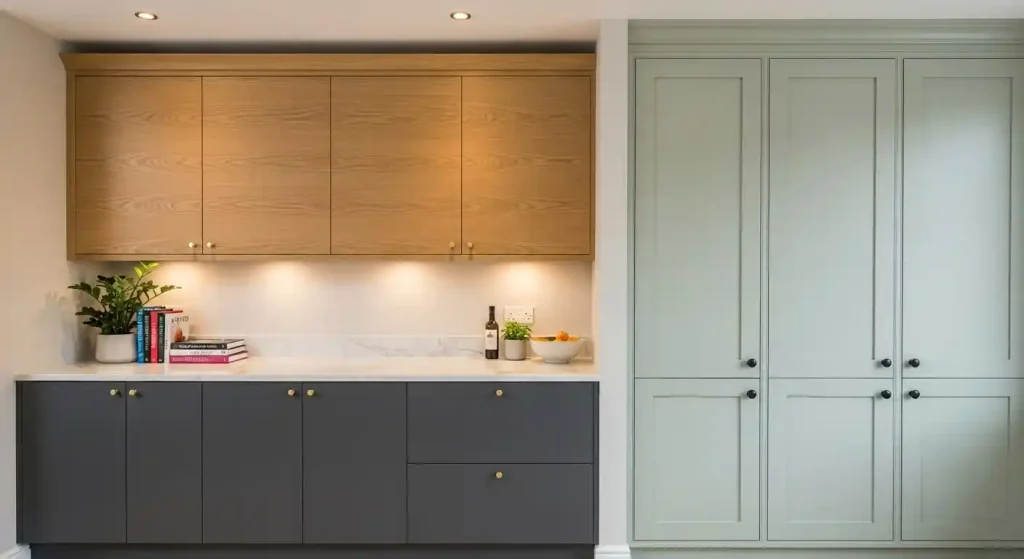
Hard-to-Reach Storage for Daily Items
While upper cabinets provide more storage, they are rarely convenient for everyday items.
Reaching the top shelves often requires a step stool, which can become frustrating for frequent use.
Most homeowners end up storing seasonal or rarely used items, leaving the prime space underutilized.
This limitation means you must carefully plan what goes up there, or you risk creating impractical storage zones.
Higher Installation and Material Costs
Tall cabinets require additional materials, custom carpentry, and sometimes reinforced installation.
These factors increase project costs significantly compared to standard cabinets.
For homeowners on a budget, extending cabinets may not offer enough return for the extra expense.
If you are cost-conscious, exploring stylish alternatives like Above Kitchen Cabinet Decor Ideas might be more practical.
Difficulties with Lighting and Ceiling Fixtures
Cabinets that extend to the ceiling often limit space for task lighting or accent lighting.
Traditional under-cabinet lighting works, but crown lighting or ceiling-mounted fixtures may require adjustments.
In some kitchens, losing that extra gap means less flexibility when it comes to wiring or fixture placement.
This challenge requires additional planning with an electrician or designer before finalizing the layout.
Risk of Overwhelming the Space
In smaller kitchens with low ceilings, tall cabinets may create a boxed-in feeling.
Rather than making the room look larger, they can dominate the space and make it feel cramped.
The effect depends heavily on ceiling height, cabinet color, and room proportions.
Using dark tones like Dark Blue Cabinets with floor-to-ceiling height can sometimes intensify the heavy look.
Limited Design Flexibility for Future Updates
Once you extend cabinets to the ceiling, changing the design later can become difficult.
For example, adding open shelving, decorative molding, or glass inserts may require major renovations.
This reduces flexibility compared to leaving a small gap that can easily adapt to changing styles.
Designers often recommend weighing long-term goals before committing to tall cabinetry.
Alternatives to Extending Cabinets Fully to the Ceiling
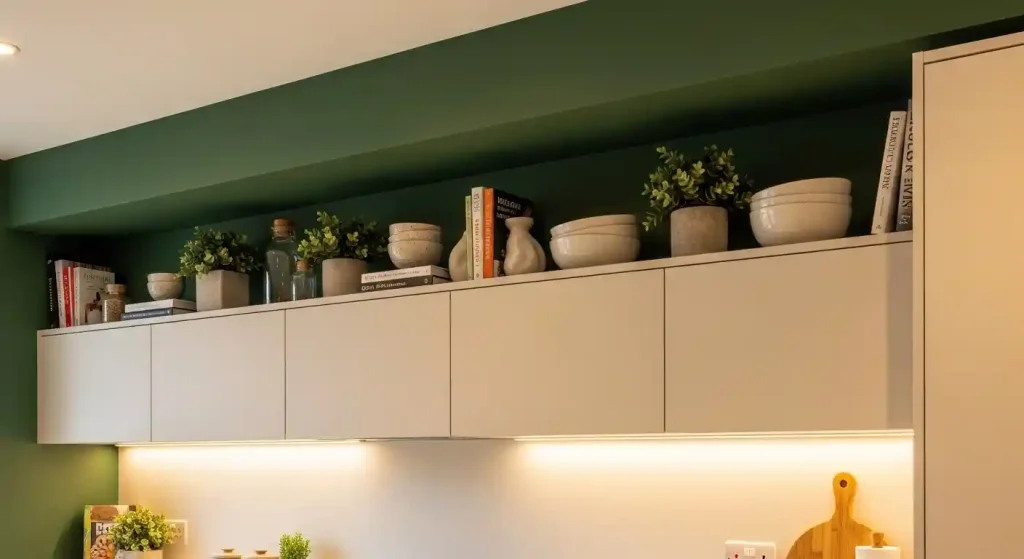
Decorative Crown Molding for a Polished Finish
If you dislike the gap above cabinets but want to avoid full-height cabinetry, crown molding offers an elegant solution.
Molding fills the space with a stylish transition that enhances visual appeal without raising costs.
This option works especially well in traditional or transitional kitchens where architectural detail feels at home.
It is also easier to update in the future compared to permanent cabinetry changes.
Open Shelving for Style and Accessibility
Open shelves above cabinets create a lighter look while adding functional storage.
They are ideal for displaying plants, dishes, or decorative pieces that bring personality into the kitchen.
Unlike ceiling-high cabinets, shelves remain accessible without ladders and can evolve with seasonal décor.
Pairing this with a cohesive color scheme, such as Green Kitchen Cabinet Ideas, makes the space look curated and welcoming.
Glass-Front Cabinets for Display Storage
Glass-front cabinets extending upward strike a balance between storage and style.
They allow you to display fine china, glassware, or collectibles while still providing protection from dust.
This choice adds visual interest and breaks up solid cabinetry, preventing the wall from feeling too heavy.
Check our Glass Cabinet Display Ideas for Kitchen for more inspiration.
Partial Extension with a Two-Tier Design
Some kitchens benefit from a two-tier cabinet setup where upper mini-cabinets sit above standard ones.
These smaller units reach the ceiling and provide extra storage without overwhelming the main cabinetry.
This hybrid approach offers a balance between function, style, and cost.
It is also an excellent way to experiment with contrasting finishes or Two-Tone Cabinets.
Styling Tips for Floor-to-Ceiling Cabinets
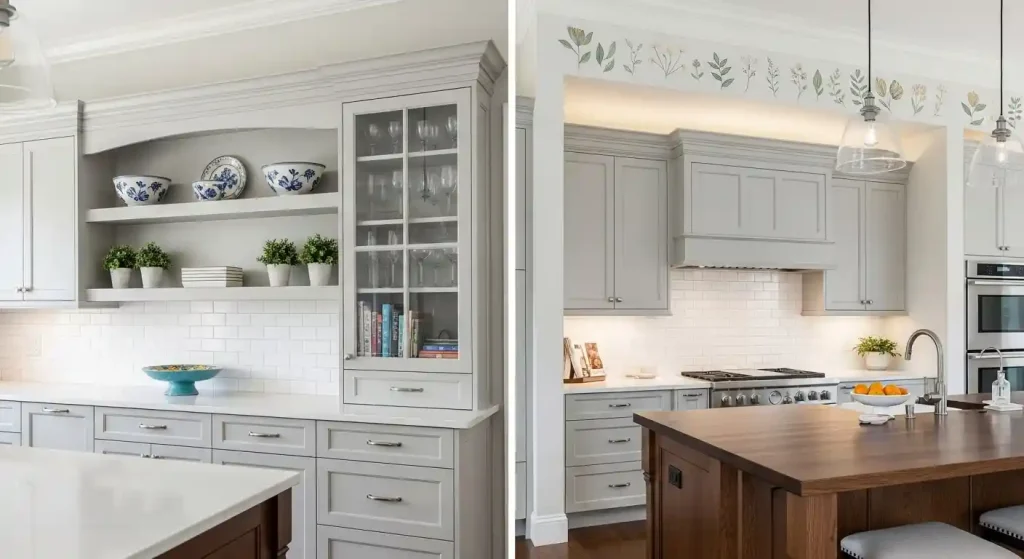
Use Light Colors to Prevent a Heavy Look
Tall cabinetry can dominate a kitchen, so color choice matters more than ever.
Light tones like cream, taupe, or white keep the room bright and prevent a closed-in feeling.
For inspiration, explore our guide to Cream Kitchen Cabinets and Taupe Kitchen Cabinets.
Pairing light finishes with glass panels or open shelving sections creates even more balance.
Incorporate Hardware for Visual Interest
With larger cabinet doors, hardware design becomes a key style element.
Long vertical handles emphasize height, while smaller pulls create a subtle classic look.
Mixing finishes like matte black or brushed brass can make tall cabinets feel more custom and intentional.
Coordinating hardware with faucets, as discussed in Should the Kitchen Faucet Match Cabinet?, ensures a cohesive design.
Mistakes to Avoid When Extending Cabinets
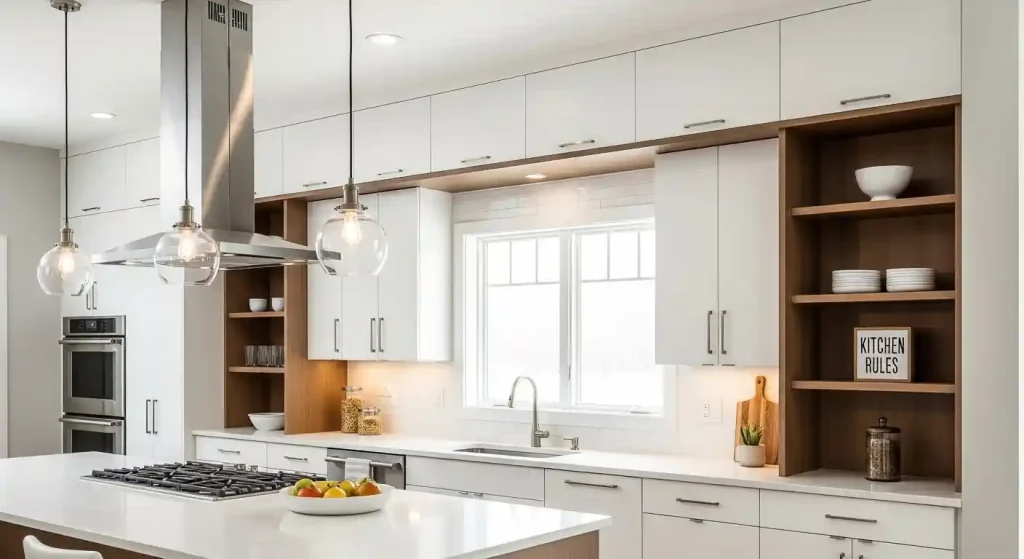
Ignoring Ceiling Height and Proportions
Installing tall cabinets in a kitchen with standard eight-foot ceilings can overwhelm the space.
If proportions feel off, the kitchen risks looking cramped rather than elevated.
Always measure carefully and consider whether full extension enhances or detracts from the room’s design.
Forgetting About Ventilation and Appliances
Range hoods, ceiling vents, and built-in appliances often need clearance that tall cabinets may block.
Overlooking this detail can create functional issues that require costly modifications later.
Work with professionals to ensure ventilation remains effective before committing to taller cabinetry.
Overestimating Accessibility of Upper Storage
Many homeowners install tall cabinets but fail to consider daily use.
If storage at the top is not realistically accessible, it becomes wasted space.
Plan to store only rarely used items up high, or consider alternatives for everyday convenience.
Cost Considerations
Budgeting for Custom Cabinetry
Extending cabinets to the ceiling often requires custom sizes, which significantly raises the budget.
Custom work involves more labor, materials, and sometimes structural adjustments.
If cost is a major concern, explore semi-custom cabinetry or hybrid designs that deliver a similar look at lower expense.
Long-Term Value vs. Upfront Investment
Although tall cabinets cost more, they often add resale value by making the kitchen look updated and functional.
Weigh the upfront investment against how long you plan to stay in the home.
If selling within a few years, the upgrade may pay off, but for long-term owners, functionality should guide the decision.
Conclusion
So, should you extend kitchen cabinets to the ceiling?
The answer depends on your priorities, budget, and kitchen proportions.
For those needing maximum storage and a sleek modern look, tall cabinets are a worthy investment.
However, for homeowners focused on budget, flexibility, or easier accessibility, alternatives like molding, shelving, or two-tier designs might be better.
Whatever path you choose, remember that cabinetry plays a major role in both function and style.
For more inspiration, explore timeless cabinet colors in What Kitchen Cabinet Colors Are Timeless and unique layouts in Modern Dining Room Cabinet Ideas.
